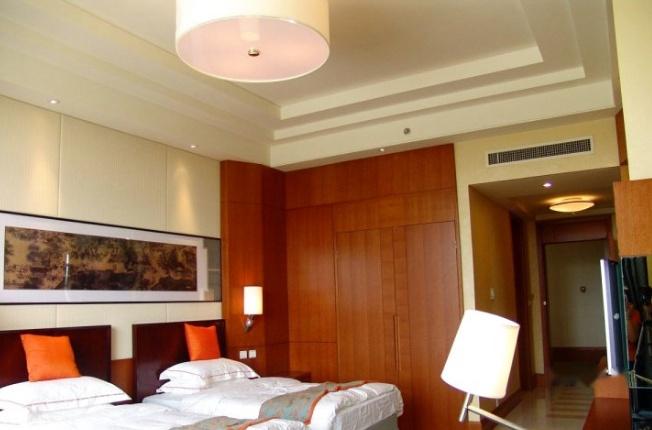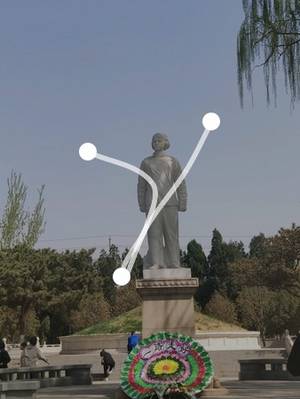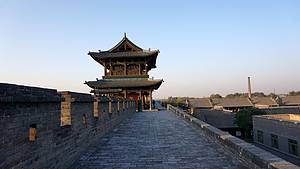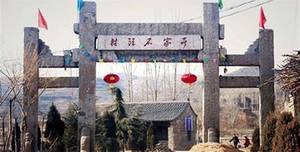Visiting the brewing workshop of Shanxi aged vinegar
1 cities |
11 attraction(s) |
total distance 51
km
 TIPS
TIPS
Day1
Day2
Day1: Taiyuan
7 attraction(s) ·
29 km
1
The Mengshan Giant Buddha, also known as the Xishan Giant Buddha, is a cliffside statue located behind the Kaihua Temple in Mengshan. In the late Yuan Dynasty, the Mengshan Giant Buddha was destroyed. It wasn't until 1980 that the giant Buddha was rediscovered, but the head of the Buddha was missing and the body was buried in rocks and soil, suffering from significant weathering damage. The lower part of the Buddha's legs to the neck is approximately 30 meters high, originally standing at a height of around 46 meters. The current head of the giant Buddha was carved by later generations.
7
km
2
The boss and lady boss are both very nice and welcoming! The taste is also good! The price is also quite affordable.
10
km
4
Taiyuan City is located in the central part of Shanxi Province, China, and is the provincial capital. Shuijing Tai is a natural and cultural attraction in Taiyuan City, located in the eastern suburb of the city, about 10 kilometers from the city center.
The Shuijing Tai scenic area covers an area of approximately 5,000 acres and features landscapes such as mountains, springs, ancient buildings, and cultural relics. The most famous attractions are Shuijing Tai and Jiepou Tai. Shuijing Tai is named for its shape and importance, as it resembles a smooth horizontal surface, and has a unique effect that gives people a clear and distinct view. From Shuijing Tai, visitors can enjoy a panoramic view of the entire city of Taiyuan and its night view.
In addition to Shuijing Tai and Jiepou Tai, visitors can also visit attractions such as Shimenxia and Shenfu Garden. Shimenxia is a karst cave scenic area. Visitors can marvel at the wonderful shapes of stalactites underwater in Shimenxia; and through the magical and steep terrain, they can also feel a mysterious atmosphere and beautiful environment. Shenfu Garden, also known as the Forbidden City of Taiyuan, was built in the Ming Dynasty and has great historical value. The garden has courtyards, pavilions, gardens, and relics of various sizes, and the tower in the garden also has a sense of escaping from the world. Shenfu Garden is one of the most popular parks among the people of Taiyuan.
During the trip, visitors can also experience the warmth and enthusiastic service of accompanying guides. They often have good English communication skills and familiarity with Chinese traditional culture, and can answer visitors' questions, allowing them to better integrate into Chinese culture and charm.
In conclusion, the Shuijing Tai scenic area is an excellent tourist destination in Taiyuan City, integrating natural scenery and cultural attractions. Visitors can enjoy the beauty of nature and the depths of human culture here.
6
km
6
The catering at Shanxi Jinci Hotel not only features the four major cuisines of Guangdong, Sichuan, Huaiyang, and Jin, but also brings together the essence of Shanxi noodles. Through continuous research, exploration, and innovation, the hotel has gradually introduced a series of state banquets and official cuisine, forming a unique culture of banquet and buffet, which has been highly praised by guests.
1
km
7
There are 29 small, medium, and large conference rooms, suitable for various types of conferences, academic seminars, receptions, celebrations, and business negotiations. The international conference center has 16 simultaneous interpretation devices, instant translation, visual teleconferencing, and can accommodate 600 people. The VIP club has the highest-grade fully automatic circulation disinfection and constant temperature swimming pool in the provincial capital, standard indoor tennis courts, KTV rooms, hot and cold saunas, spa massages, and leisure bars, making it an ideal place for leisure, fitness, and entertainment.
Day2: Taiyuan
4 attraction(s) ·
23 km
1
Qinglong Town looks like a flying dragon, with the entire architecture forming the shape of a dragon. The buildings at the south end of the town curve like the tail of a dragon, while the buildings on the western curve represent the dragon's right leg, and the curving road to the collapsed cliff on the eastern side represents the dragon's left leg. When viewed from the road towards the river, it looks like the dragon's claws just emerging from the water. The arched old road on Fengshui slope is the dragon's right foreleg, and the curved slope of the Dragon King Temple is the dragon's left foreleg. Xiamen Street is the dragon's neck, the main crossroad is the dragon's claws, and the river slope is the dragon's head. The five-li long street forms the dragon's body, and the wells in the two temples on the dragon's head, such as the River God Temple, resemble dragon's eyes. There are many shops on both sides of Qinglong Town, all of which are Ming and Qing dynasty-style buildings. There is also a tower nearby, which used to be a beacon tower for transmitting military information, and it looks like a giant pen from a distance. There are also temples such as Lao Ye Temple, Mount Tai Temple, Grandma Temple, River God Temple, Wenchang Temple, Dragon King Temple, King Temple, and Tea Emperor Temple around the ancient town. The magnificent temples are like soaring eagles, protecting the ancient town like mythical beasts. This kind of ancient town is truly a symbol of auspiciousness and peace.
22
km
2
A halal restaurant with fantastic flavors. Classic dishes include dumplings filled with meat and beef as well as lamb.
1
km
3
The Donghu Vinegar Garden is the first industrial museum in Shanxi Province, showcasing the traditional and modern production processes and historical cultural connotations of aged vinegar. The exhibition hall and vinegar therapy garden collect various vinegar brewing utensils and agricultural implements since the Western Han Dynasty, as well as over 700 vinegar therapy prescriptions, fully presenting the historical and cultural heritage of Shanxi aged vinegar. Visitors can participate in some of the production processes and taste various aged vinegars for free. For food hygiene reasons, visitors are required to comply with relevant regulations and are not allowed to roam freely or touch production tools during the visit.
1
km
4
Participating in hands-on projects such as homemade vinegar peach pastries can help visitors truly understand the value and health benefits of Donghu vinegar, allowing every tourist to feel that their trip was not in vain.




























